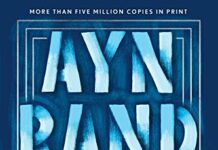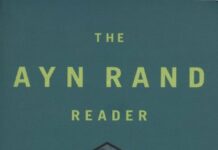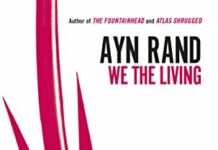
Ebook Info
- Published: 2001
- Number of pages: 212 pages
- Format: EPUB
- File Size: 0.22 MB
- Authors: Ayn Rand
Description
A remarkable series of lectures on the art of creating effective nonfiction by one of the 20th century’s most profound writers and thinkers–now available for the first time in print.Culled from sixteen informal lectures Ayn Rand delivered to a select audience in the late 1960s, this remarkable work offers indispensable guidance to the aspiring writer of nonfiction while providing readers with a fascinating discourse on art and creation. Based on the concept that the ability to create quality nonfiction is a skill that can be learned like any other, The Art of Nonfiction takes readers through the writing process, step-by-step, providing insightful observations and invaluable techniques along the way. In these edited transcripts, Rand discusses the psychological aspects of writing, and the different roles played by the conscious and unconscious minds. From choosing a subject to polishing a draft to mastering an individual writing style–for authors of theoretical works or those leaning toward journalistic reporting–this crucial resource introduces the words and ideas of one of our most enduring authors to a new generation.
User’s Reviews
Reviews from Amazon users which were colected at the time this book was published on the website:
⭐Collated from prior presentations that Ayn Rand undertook, The Art Of Nonfiction is a straight forward foray into Rand’s considerations, techniques and process of writing nonfiction.Written in a cogent and methodical fashion, some of the main points Rand addresses are (1) subject and theme, (2) creating an outline, (3) writing the draft, (4) editing, (5) style, which is addressed at length, and even (6) writing books as well. The prior list is not exhaustive, but merely a sampling of the range of ideas Rand undertook.While some of the rules Rand expounds upon could be seen as mechanical if acted upon rigidly, they need not be. Writing is as much an art as it is a science; using the rules she suggests as guidelines will certainly help one’s writing in a sound manner, as long as one doesn’t fuse themselves to a mechanistic process.Be that as it may, two of the main points which Rand stressed considerably were that of clarity, and the importance of an outline. These are two parts of writing which all writers struggle with sooner or later, but they are also components that will net some of the greatest benefits if one executes them properly.On the point of clarity, Rand elucidates:“If you cannot write something down clearly and objectively, then you do not really know it. Any vagueness or indecision on any fundamental aspect of your article will be disastrous. That which you cannot name you know only approximately.”[2]Translation: Know what you know, know what you don’t know, and be crystal clear and precise about it.Along the same avenue, on the point of outlines, Rand states:“The Outline’s level of detail depends on how clear the subject is in your mind, and how complex the article is. I suggest the following test. If in making an outline you feel vaguely that some point is difficult to formulate though you “kind of” know what you mean, then you need more detail. On the other hand, if you begin to feel bored – if all you need are a few lines on some point but you are writing a volume – then you are being too detailed. As in all mental activity, you are the only judge.”[2]For a book whose information wasn’t meant to be part of a book at the outset, it flows seamlessly. Given that The Art Of Nonfiction was collated from a set of oral lectures, the editing done by Robert Mayhew is extremely precise, and Rand’s thoughts are easy to follow.For good measure, the book even includes selected outlines used by Ayn Rand in some of her articles. This helps the reader view an outline through Rand’s eyes. Though this section isn’t lengthy, the precision in execution is flawless and aids in the reader setting their crosshairs on what a correctly created outline format will look like.In light of the breadth and scope of information provided in such a small package, The Art Of Nonfiction would be a mainstay in any nonfiction writer’s arsenal. Incisive individuals who wish to apprise themselves of sound writing tips that will be guideposts for their writing endeavors would be wise learn the tenets in these books, for they are as important as they are timeless.___________________________________________________________Footnotes:[1] Ayn Rand, The Art of Nonfiction, p. 17.[2] Ibid., pp. 44-45.
⭐Ayn Rand, the famous author of Atlas Shrugged, The Fountainhead and other books, and the founder of the philosophy of Objectivism, offered oral lectures to her followers on the art of writing nonfiction. Robert Mayhew rearranged the tapes of these lectures into a readable and helpful guide for writers and readers of nonfiction.Rand stresses clarity more than anything else. Writing skills, she says, are not mysterious. If people follow about a dozen rules and practice writing, they will write competent articles. Writers need to focus on their subject and theme. Then, before writing, compose an outline of what they intend to say.The subject must be stated simply, preferably in a single sentence. “I am going to write about… .” The theme is “What do I want to say about my subject and what is new about what I am saying?”Beginners must use a written outline of what they want to say and how it will be presented. Even experienced writers need an outline; however, it can be mental. The outline should address what their audience is interested in reading.Rand emphasizes that ideas come from the subconscious, Once writers know what they want to say, start writing and “let the words come automatically. Do not think over your sentences and do not (stop and) censor yourself…trust your subconscious. Give your subconscious the standing order that you are concerned only with your subject and the clearest presentation of it possible, and let that be the absolute directing your writing.” Then, “In editing, you do the opposite: the dominant process involves your conscious mind.”Rand emphasizes that the style and rhythm of writing is also subconscious, and is frequently ruined by conscious attempts at improvement in the initial process which should only be to get the ideas on paper.Rand mentions many things that authors should avoid. Writings should not be filled with generalities; it needs specifics. Readers should be able to see what you are mentioning through details, rather than being told about it. Writings should not preach, say something in a complicated fashion, and use hundred dollar words, pejorative adjectives, sarcasm, inappropriate humor, bromides, and unnecessary synonyms.Rand spices her book with examples from her writings and includes many interesting thoughts, such as: “the whole history of philosophy is a duel between Plato and Aristotle.” Plato’s thinking was somewhat other-worldly and mystical, while Aristotle, like Rand, focused on the facts of this world.Ayn Rand followed her teachings and presents a clear, detailed, down-to-earth guide for excellent writing.
⭐The approach to the subject of writing nonfiction can cover a wide and varied subject area. This interesting and unique 192 page soft cover (The Art of Nonfiction: A guide for writers and readers by Ayn Rand) book is an example of a philosophical approach to writing nonfiction. In fact, if you are not familiar with some of the basic principles of Ayn Rand’s philosophy of Objectivism you may not grasp some of the points she makes in this text.I have not only read all her books but I have also taken a few formal courses on the philosophy of Objectivism many years ago which makes reading and understanding this book easy for me. Even though I have had literally thousands of articles, essays and reviews published the last 55 years I still learned a lot reading this book.This book was based upon a series of informal lectures given in 1969 to a select group of friends and associates of Ayn Rand. This is a very detailed approach to writing nonfiction which is of value to anyone interested in learning the basic principles involved in this craft. The topics covered in this book are as following: preliminary remarks, choosing a subject and theme, judging one’s audience, applying philosophy without preaching it, creating an outline, writing the draft, editing, style, book reviews, writing a book, selecting a title and acquiring ideas for writing.Even though it is helpful to know something about the philosophy of Objectivism you can still learn an enormous amount of practical ideas and information on how to write nonfiction articles, reviews and books from reading this text. I found it to be an enlightening reading experience.Rating: 5 Stars. Joseph J. Truncale (Author: Never Trust a Politician: A critical review of politics and politicians)
⭐It reads of its’ time. But the voice is so individual that Ayn Rand might only just have just finished speaking. She has her own philosophy, for sure, but then it just makes me wonder about all those other ‘how to’ books, and how they lack a personal philosophy, making them appear as if they are trying to appeal to the greatest number of writing wannabees, while really they lack concrete substance behind the writing of them. I read the first pages from the sample on Amazon, and I was hooked on her personal approach. There are no, what we no as ‘sound-bytes’ to tickle the wordly palette, just strong prose.
⭐This book really helped me to demystify some ideas I had about writing. Rand’s methodology it’s clear and helpful in different aspects of writing and reading.
⭐Perfect.
⭐As always, Ayn Rand writes clearly and with brilliant insights. She doesn’t just state something , but rationally explains WHY.
Keywords
Free Download The Art of Nonfiction: A Guide for Writers and Readers in EPUB format
The Art of Nonfiction: A Guide for Writers and Readers EPUB Free Download
Download The Art of Nonfiction: A Guide for Writers and Readers 2001 EPUB Free
The Art of Nonfiction: A Guide for Writers and Readers 2001 EPUB Free Download
Download The Art of Nonfiction: A Guide for Writers and Readers EPUB
Free Download Ebook The Art of Nonfiction: A Guide for Writers and Readers


